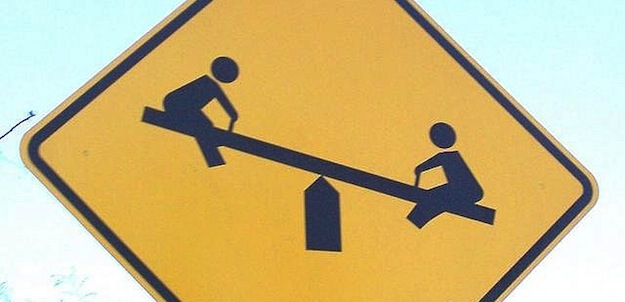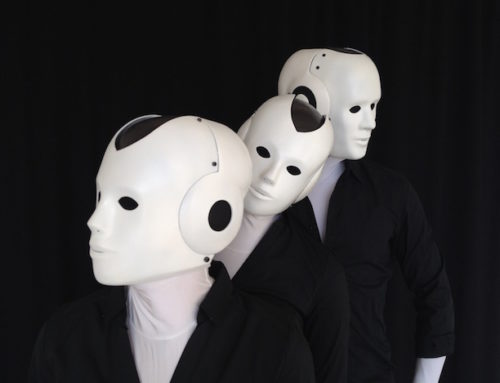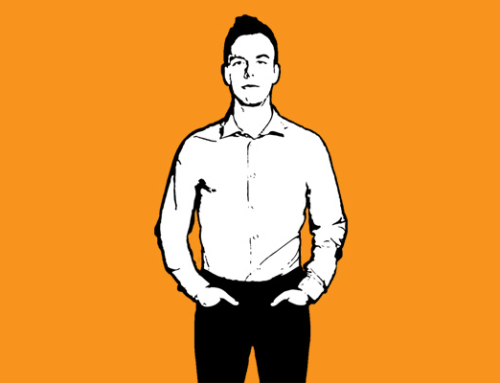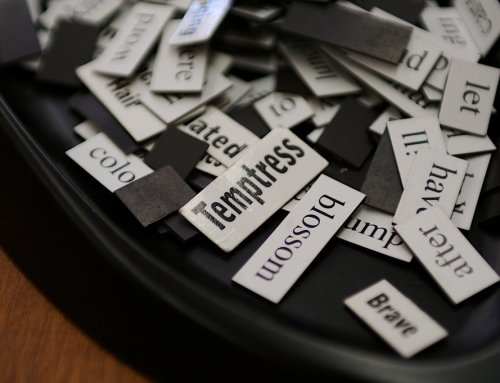The term status plays a defining roll on the stage. Audiences recognize status without it even being mentioned. Status is always there. Actors must consciously learn to show it. If it is missing from a performance, the scene will seem unnatural.
What is status?
Status describes the imbalance of power 2 people in a relationship. Next to the social status, which reflects the rank in society there is a situational status when two people meet. Like the sociologist Paul Watzlawick says; like that two people cannot help but communicate, status between people cannot fail to exist. This temporary status is expressed through body language, speech and conduct.
Social status is shown through status symbols like titles, position, assets and money. Every society has a hierarchy and everyone their place in it. In different groups; the workplace, family, friends or clubs, one has varying positions. In pertains also to everyday situations and on stage; one’s status is a dynamic process.
The person with the highest rank acts more dominant than the one with the lowest rank. Protagonists who play a lower status must adapt to a dominant figure.
Why is status important?
The status that describes the difference between two people or things creates tension. A piece with two actors that try to play without status is boring. It reminds one of the beginning of a school play where nobody dares to get too close to another. As soon as the slight differences in status are visible, the scene becomes authentic and interesting.
Good actors consciously dramatize their status. For beginners it is sensible to clearly enact their status. This leaves opportunities to change their status.
The audience likes to see when the person with the lowest social status (the tramp) act as if they were above the person (the count) with the highest social status.
Charlie Chaplin enjoyed playing the role of a low status person who in the end is above everyone else. This transformation is exciting.
How is status presented?
We play a status role, high or low, on a daily basis. People give different signals. Sometimes one can display both low and high status signals at the same time. This makes it difficult to determine status based on a minimum of body language.
My rule of thumb: When the overall high status indications from person 1 in relationship to person 2 are higher, then person 1 has the higher status. It’s not necessarily the number of signals that counts but the meaning in the specific situation.
The Onion Model
Indications of status can be best explained with the Onion Model. Every expression of body language or speech can be seen as the layer of an onion. We can analyze the individual layers to come up with an overall picture.
Let’s look at the possible layers:
Status in body language
Internal attitude
A deliberate inner posture of Status is physically noticeable by audiences. One projects from inside to out. I familiarize myself what symbolic characteristics my figure should extoll. Then actions and attitudes ensue naturally. The actor can then attune to the situation without needing to waste energy thinking about the details of appropriate body language. Experience shows that it’s impractical to contemplate all of the details at the same time.
Internal characteristics of high status: Relaxed, every situation is taken calmly and serene. The high status person is without problems and knows what to do: “Nothing can happen to me. The room and everything in it belongs to me. I know what I want and don’t have to prove anything. I do everything right.”
The high status person asks to lead, to unsettle others. Naturally he doesn’t wait for permission. The high status person is true to his principles and is flexible. He understands social norms yet when needed, can elect to ignore them.
Internal characteristics of low status: Nervousness. I feel insecure. I don’t want to do anything wrong. Hopefully others think well of me. Just don’t draw attention or offend anyone. He sees problems everywhere and doesn’t mange to get along well in daily situations. He also doesn’t perceive other’s problems or what they are up to.
He continually asks for permission to appease others. The low status person violates social norms out of insecurity. He is stubborn, knows everything better, is unable to learn or arrogant. His has low self-esteem.
Signs of status body language
For the audience it is important what they see and perceive. The inner attitude shows externally. Here are the important layers (Onion Model) of status for body language.
Occupying space
One of the most important signs of high status is to establish space. One shows territorial behavior. That goes for their own space and the space of others that they want to invade without permission. Individuals with low status allow this to happen. A symbol of low status person is the exaggeration of acting like they have a higher status. The desire to be bowed to and served becomes comical.
Posture
High status: The person stands relaxed. Feet are at least shoulder wide. The person stands tall and open. Whoever is highest on the podium, for example, is more important.
Low Status: The best example is a soldier at attention. His feet are close together. He has no freedom to move. Having the feet far apart is also a sign of low status.
Body language axis
High status: Straight or slightly leaning back. The position is more casual than one of low status.
Low status: Bowed forwards towards the person or object with the higher status. The position is hunched, tight and defensive. Shoulders are high. The figure kneels or throws himself on the ground assuming a less comfortable position than the high status one.
Movement
High status: Movements are targeted, supple and confident. The head hardly moves. An important aspect is that all movements are executed slowly and controlled. A good comparison is observing the style in a slow motion film. In slow motion people appear powerful. Every movement shows meaning.
Low Status: The movements are hectic, fast, stiff, insecure and jittery. The head moves a lot. This can be compared to an old film played on fast forward. The person seems comical, clumsy and has a low status.
Physical contact to oneself
High status: One hardly touches oneself or only self-consciously.
Low status: One often touches oneself especially on the face and neck. Most are gestures of embarrassment. The low status person doesn’t know what to do or where to place his hands. The figure Mr. Bean is a good example. He often touches his face, bites his nails or wipes something from his jacket.
Touching others
High status: The high status person touches others without permission. Examples: putting a hand on the shoulder, removing lint or forcing another into a specific position. He invades other’s personal space or commands them to come nearer.
Low status: Dreads every form of contact yet often allows it. He leaves the space and stage to others. Keeps his distance.
Eye contact
High status: Looks people directly in the eye. Maintains a socially acceptable duration of eye contact. If needed, he can ignore the norm and stare down and opponent. Generally ignores other people and objects.
Low status: Avoids eye contact. Often looks for an inappropriate length of time, typically starring or looking naïve or confused. Upon seeing a higher status person, they avoid eye contact, look away and then back again.
Speech
High status: Normally a relaxed and deep voice. They speak fluently with self-assurance. When needed, they feel secure to whisper or yell.
Low Status: They speak quickly, quietly and indistinct. He hesitates and gets muddled. His pitch is high, stiff and squeaky.
Reactions
High status: Reacts slowly to low status people. His attitude is to defer or outright ignore them.
Low Status: Reacts immediately and quickly. Overzealous and allows himself to be put down.
Status is always there
Status is always relative to another person. One is always higher or lower in status compared to another. A relationship “without status” doesn’t exist.
Status exists not only between people but pertains to space and objects as well: Mary throws her used towel away without thought (she has higher status than the tissue). Peter lifts this towel with dread and hangs it on a hook (low status).
Changing status – The status seesaw
For one presenting status, there is the model of the status seesaw. When I present myself high, the other appears lower. An example; “my hair looks good today.” But I can also set myself lower in status; “My hair looks bad today”. This elevates the other’s status.
Naturally, I can also put down the other to raise myself; “your hair looks bad today”. That can also be turned around. I can elevate the other and thus put myself down.
With consciously played status, one helps the audience to understand the situation. The king can only be recognized as the highest individual when all others are clearly lower. There is also a saying; “the others just play the king.”
Applied to myself
I go up, the others go down.
I am down, the others go up.
Applied to others
Others are higher, I am lower
Others are lower, I am higher
Take note:
One‘s self-perception can differ greatly to another’s perception of you. One can attempt to be friendly yet still be perceived as being antagonistic. In the following example, person B will represent the low status person.
Person A: “You made a tasty soup.”
Person B: “Oh, it was nothing special.”
Person A elevates B with compliments. B diminishes the comment in effect questioning A’s taste.
Here Person A will compliment B:
Person A: “the third course of this meal tasted good.”
Person B now asks himself if the other courses were okay.
High status doesn’t necessarily mean arrogance. The high status person has no need for it. The examples mentioned till now show the extremes. Equal status on the stage is just boring. It doesn’t exist in real life. What are interesting are the slight differences or the resulting conflicts.
Lousy actors confine themselves to their favorite status. Good actors are conscious of their role’s status and can adapt when desired.
Want to see more?
Want to learn more about body language? Check out the section on body language in the list of the most popular articles.
Foto: tyger_lyllie






Hinterlasse einen Kommentar